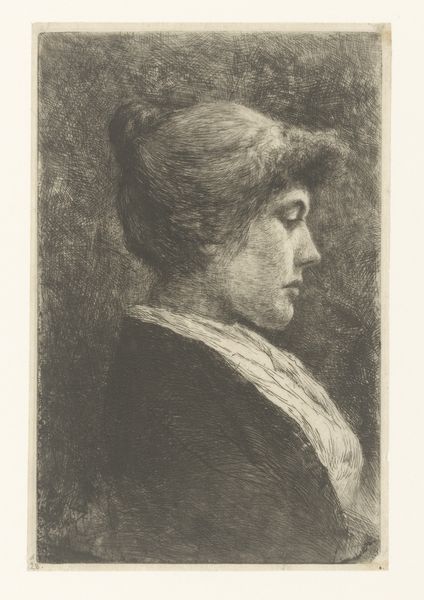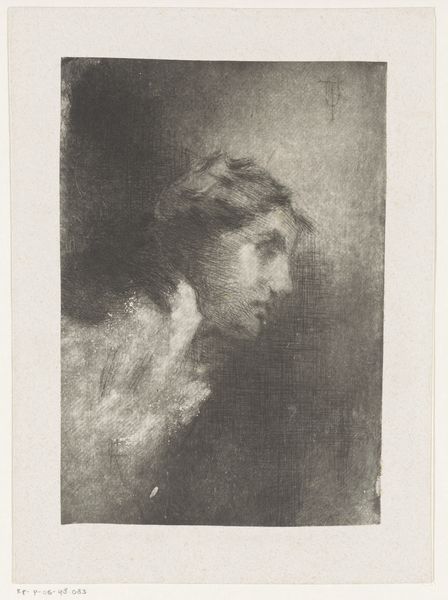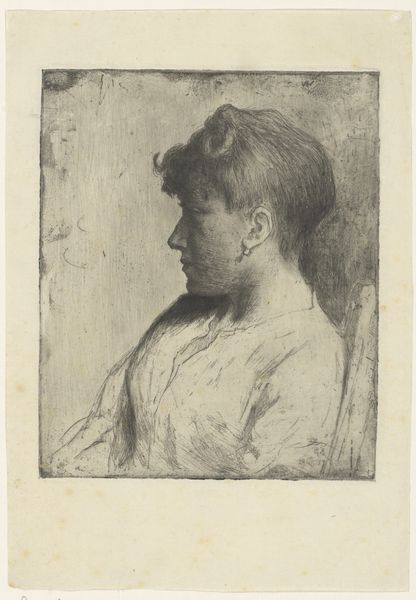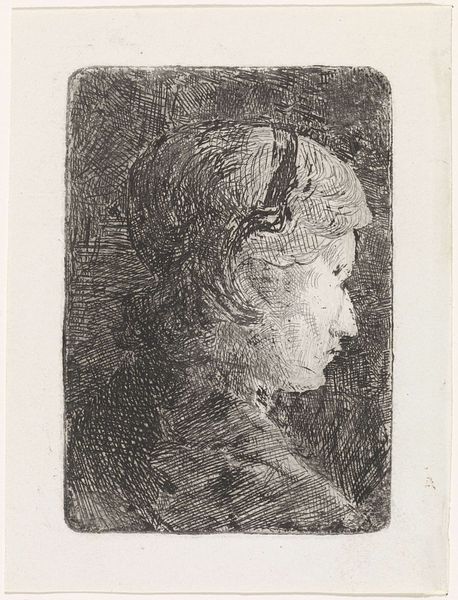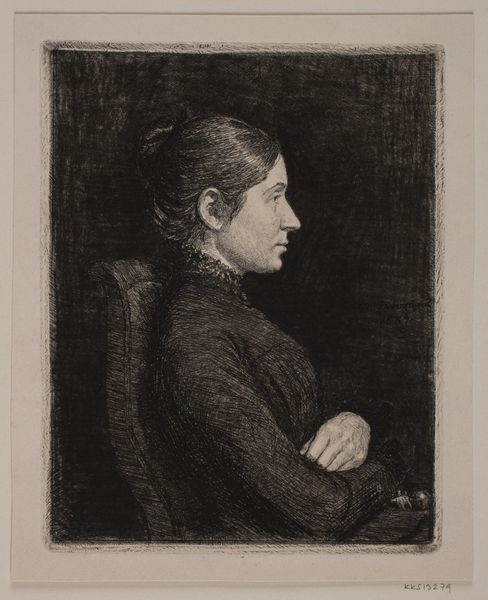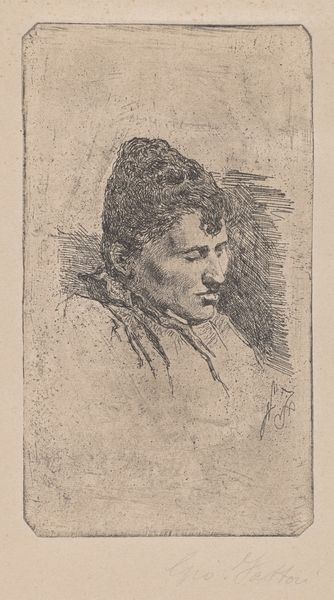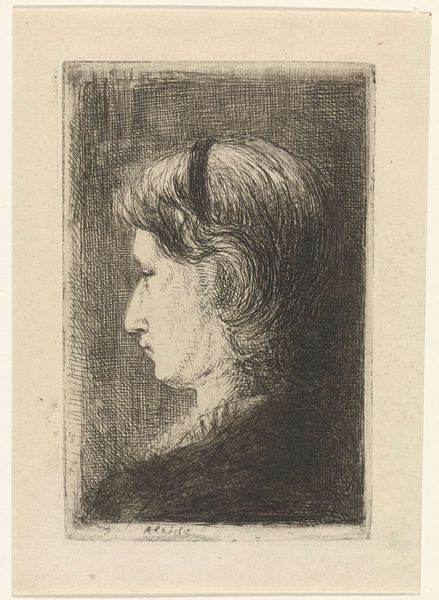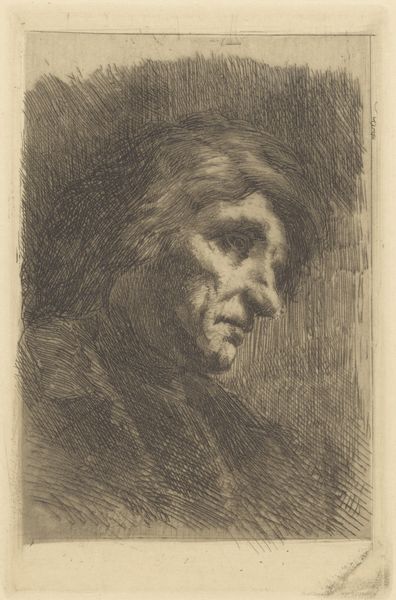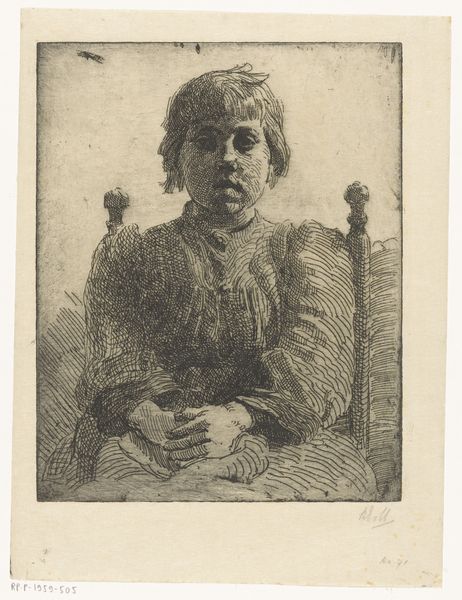
drawing, print, etching
#
portrait
#
drawing
# print
#
impressionism
#
etching
#
old engraving style
#
figuration
#
pencil drawing
#
realism
Dimensions: height 184 mm, width 120 mm
Copyright: Rijks Museum: Open Domain
Curator: This is Philip Zilcken’s "Portret van een vrouw, en profil," created between 1867 and 1890. It's an etching. Editor: The immediate impact is the subtlety of the tones, a hushed quietude emphasized by her averted gaze. There’s something very vulnerable in it. Curator: Note the remarkable control of line and value, which lends the piece its distinctive graphic quality. The parallel hatching is strategically deployed to create tonal variation and form. The artist employs etching techniques masterfully. Editor: How do you think this echoes broader class issues of that time? The profile view was popular for formal portraiture, but it could also represent the objectification of women by only displaying a limited or curated version of the sitter to a primarily male audience. Curator: Perhaps. However, the formal restraint of the profile is less about reducing the subject, and more about formal clarity. By limiting the available visual information to a side view, the emphasis is drawn towards form and line and structure. Editor: Right, but by choosing etching, a readily reproducible method, there's an argument to be made for accessibility of portraiture, especially considering portraiture was typically reserved for the elite, so that adds a layer to her overall visual presentation. Curator: One can easily look past social theory to note Zilcken’s mastery over line to portray both solidity and atmosphere simultaneously. Editor: Still, dismissing the broader narratives would overlook so much depth of characterization! Curator: Even while examining line and light, context always deepens how we approach these portraits. Editor: Ultimately, though, the work stays with us—with lingering questions about representation.
Comments
No comments
Be the first to comment and join the conversation on the ultimate creative platform.
